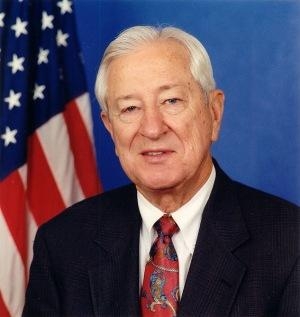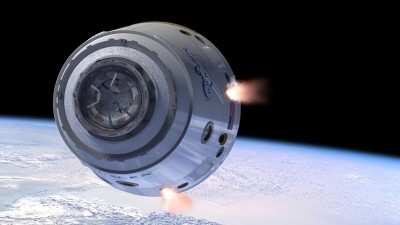Witnesses Highlight Potential For Profitable Business
Models
The Committee on Science, Space, and Technology held a hearing
late last week to provide aerospace companies and NASA an
opportunity to testify about progress being made toward the goal of
establishing a commercial capability to fly humans to and from low
Earth orbit and the long-term non-Government commercial market for
private launch services.

Emphasizing the uncertainties of this new business model,
Committee Chairman Ralph Hall (R-TX) (pictured) said “I think
that NASA owes Congress and the laudable companies that are before
us today a much more thorough assessment of the situation
ahead. These companies have invested millions of dollars and
Congress has committed millions more—it is time for NASA to
deliver credible plans and analysis so that we can move forward
with more confidence.”
Until a commercial crew launch system becomes operational around
the planned 2017 timeframe, NASA is reliant on Russia’s Soyuz
launch system to ferry American astronauts to and from the
ISS. NASA currently has a contract with the Russians to
purchase Soyuz seats at a cost of approximately $56 million per
seat through 2013, and increasing to approximately $62.7 million in
2014 and 2015. In total NASA expects to spend about $1.4
billion if it fully exercises all contracts. Representatives
from commercial companies today said that they will eventually be
able to provide crew transportation at a much lower cost.
After expressing several concerns, Chairman Hall said, “For
all my seeming skepticism, I am willing to be convinced that
I’m wrong, and I hope I’m wrong. I want the
private markets to relieve NASA of the cost and burden of building
a new launch system for low Earth orbit. In a time of constrained
budgets, we must first protect our presence in space and keep the
faith with the American people and our foreign partners.”
SpaceX Dragon

Witnesses highlighted the potential for a future profitable
market, saying that the market exists, but its size and composition
are not yet known. “There is ample evidence of a demand for
spaceflight beyond NASA, though it has yet to emerge as a
substantial operational secondary market,” said Elon Musk,
CEO and Chief Technology Officer of Space Exploration Technologies
Corp. (SpaceX).
George Sowers, Vice President of United Launch Alliance, said
“There is extremely high uncertainty in this market and NASA
shouldn’t build its program assuming it materializes.
But if a market does emerge, everyone will benefit: new jobs
will be created and the Government’s prices will go even
lower, across both the civil and military sectors.”
NASA Inspector General Paul Martin said the commercial human
spaceflight industry is in its infancy and the market beyond
NASA’s own crew transportation needs is uncertain.
“Many of the risks associated with achieving anticipated cost
savings are largely out of NASA’s control, particularly in
the area of creating non-Government demand for commercial human
spaceflight services,” he said.

William H. Gerstenmaier, Associate
Administrator for the Human Exploration and Operations Mission
Directorate at NASA, acknowledged that relying on commercial crew
services may be risky. “Human spaceflight is a very difficult
endeavor, and our industry partners will have the responsibility
for the full end-to-end system,” he said. “We
cannot guarantee their success; however, we can structure an
approach that provides the highest probability of
success.”
During the hearing, comments and questions by Chairman Hall and
other Members of the Committee highlighted how and when NASA
astronauts will return to space in an American-built rocket on U.S.
rockets, uncertainty of the commercial markets, and the lack of
supporting documents NASA has provided to Congress to justify their
budget numbers.
 ANN's Daily Aero-Linx (04.16.24)
ANN's Daily Aero-Linx (04.16.24) Aero-News: Quote of the Day (04.16.24)
Aero-News: Quote of the Day (04.16.24) Airborne 04.10.24: SnF24!, A50 Heritage Reveal, HeliCycle!, Montaer MC-01
Airborne 04.10.24: SnF24!, A50 Heritage Reveal, HeliCycle!, Montaer MC-01 Airborne 04.12.24: SnF24!, G100UL Is Here, Holy Micro, Plane Tags
Airborne 04.12.24: SnF24!, G100UL Is Here, Holy Micro, Plane Tags Airborne-Flight Training 04.17.24: Feds Need Controllers, Spirit Delay, Redbird
Airborne-Flight Training 04.17.24: Feds Need Controllers, Spirit Delay, Redbird





